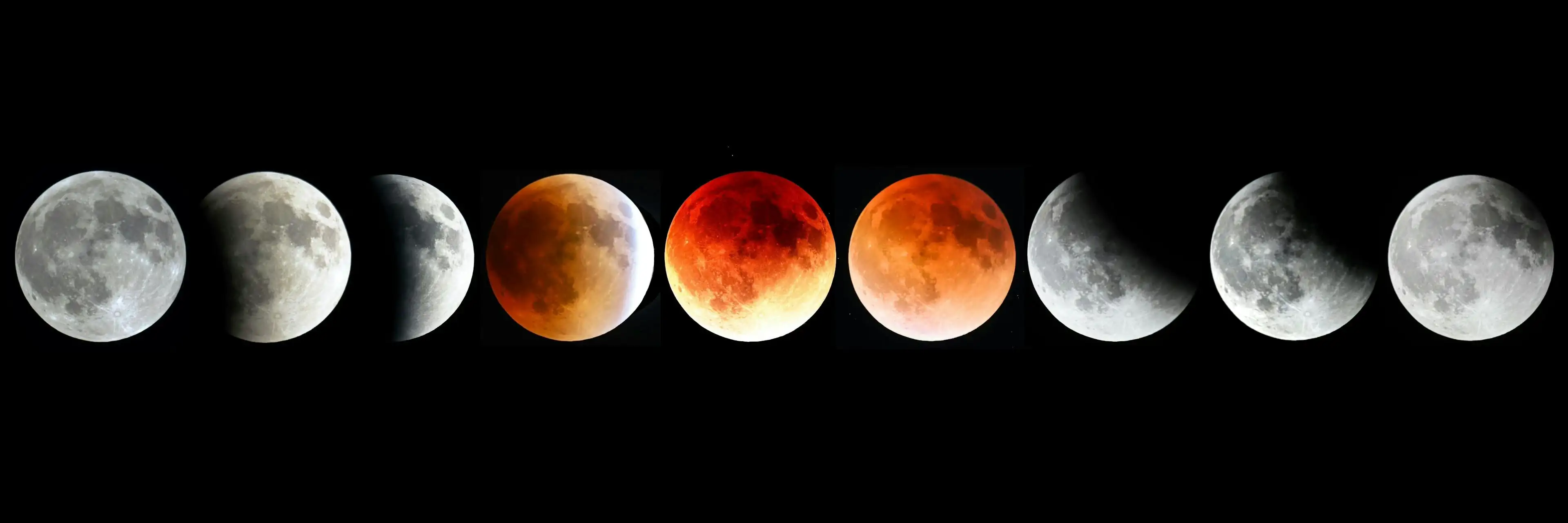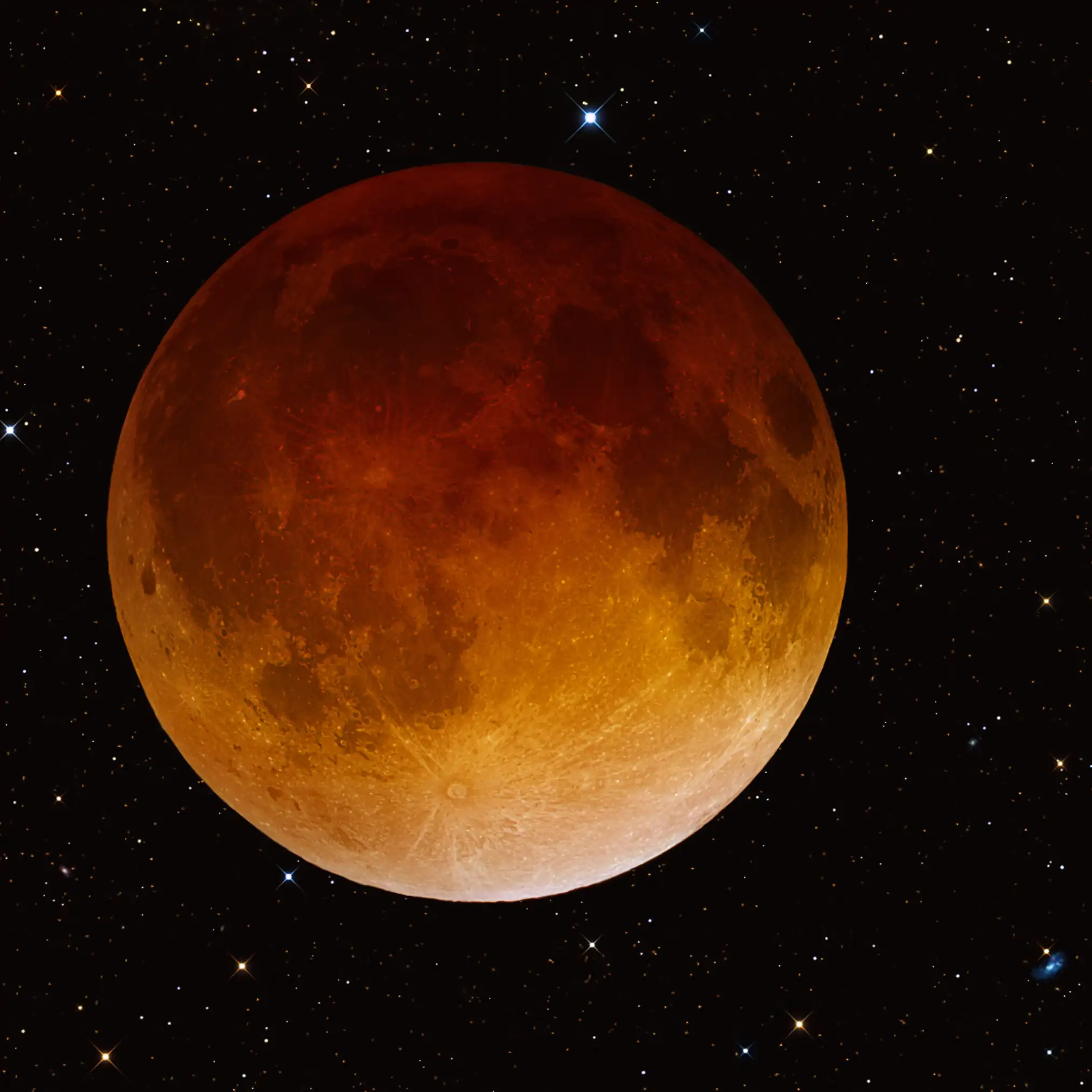Introduction
A lunar eclipse offers a slower, more forgiving celestial event than its solar counterpart. You don’t need solar filters, and you have more time to frame, expose, and experiment. That said, the challenges are different: darkness, motion, noise, and dynamic range.
In this guide I’ll walk you through how to plan your shoot, choose the right gear, determine exposure strategies, compose for impact, and post-process your results. Whether you aim for a tight “blood moon” or a dramatic lunar landscape, this guide will help you get great results.
Understanding the Lunar Eclipse
Eclipse types
- Penumbral eclipse — the Moon passes through Earth’s penumbral shadow; the dimming is subtle and sometimes hard to detect.
- Partial lunar eclipse — part of the Moon passes into Earth’s umbral (full) shadow; you see a dark bite moving across.
- Total lunar eclipse — the entire Moon enters the umbral shadow; often called a “blood moon” as Earth’s atmosphere refracts reddish light into the shadowed Moon.
During totality, depending on atmospheric conditions, the Moon can appear bright red, coppery, or very dark (on the Danjon scale).

Planning & Location
Scout location & horizon coverage
- Choose a spot with clear sightline toward the Moon’s path.
- Include interesting foregrounds (e.g. trees, mountains, architecture) for context.
- Minimize light pollution.
- Use planning apps like PhotoPills or Stellarium to visualize timing and path.
👉 Pro tip: Use photo.recipes/lenses to design the perfect setup for your exact lenses
Timing & patience
- A lunar eclipse can last several hours, giving you time to experiment.
- Arrive early to set up and test gear.
- Be ready to adjust exposures as light changes gradually.
- Plan for multiple compositions (tight, wide, timelapse).
Gear & Accessories
Essential gear
- Camera — mirrorless or DSLR with manual controls.
- Long telephoto lens or telescope (300 mm, 400 mm, 500 mm+).
- Sturdy tripod.
- Remote shutter or intervalometer.
- Extra batteries and memory cards.
Recommended additions
- Tracking mount / star tracker — to avoid motion blur.
- Secondary wide-angle lens — for landscape + eclipse compositions.
- Lens hood / dew heater.
- Warm clothes for comfort during long nights.
- Portable power bank for extended sessions.
👉 Not sure which lens to pair with your body? Generate the ideal gear combo at photo.recipes/lenses.
Exposure Strategy & Settings
Baseline (non-eclipse) lunar exposure
- Aperture: f/5.6 – f/8
- Shutter speed: ~1/125 s or faster
- ISO: 100–200
Eclipse phases
As the Moon darkens, lengthen exposures:
| Phase | Aperture | Shutter speed | ISO |
|---|---|---|---|
| Pre-eclipse (full Moon) | f/5.6–f/8 | 1/125 – 1/30 s | 100–400 |
| Partial eclipse | f/5.6–f/8 | 1/60 – 1/4 s | 200–800 |
| Deep partial | f/8–f/11 | 1/2 – 2 s | 400–1600 |
| Totality | f/8–f/11 (or wider) | 2–8 s | 400–3200 |

Extra tips:
- Bracket exposures frequently (±2–3 stops).
- Use spot metering on the Moon.
- Check histograms often to avoid clipping highlights.
- If using a tracker, try longer exposures to capture stars alongside the Moon.
Focusing, Composition & Framing
Focus
- Use live view magnification and focus peaking.
- Focus on the lunar limb before eclipse starts.
- Lock or tape the focus ring.
Composition
- Tight shots to show lunar texture.
- Wide-angle shots with foregrounds (silhouettes, landscapes, cityscapes).
- Timelapse / trails to show motion.
- Composite sequences of multiple phases.
Challenges & Fixes
- Motion blur → Use tracker or shorten exposures.
- Noise → Keep ISO low, or stack exposures in post.
- Atmospheric turbulence → Shoot when the Moon is higher.
- Battery drain → Bring extras and keep warm.
- Dynamic range → Bracket exposures and blend later.
- Clouds → Don’t give up; even gaps can produce dramatic frames.
Workflow on Eclipse Night
- Arrive early — set up and focus.
- Shoot baseline full Moon exposures.
- Adjust settings as eclipse progresses.
- During totality, experiment with long exposures and different compositions.
- Post-totality, shorten exposures again.
- Capture creative shots (foreground, timelapse, star trails).
- Backup and monitor batteries/cards.

Post-Processing
- Import RAW files.
- Align and stack to reduce noise.
- Blend exposures (HDR style).
- Adjust contrast, clarity, and color toning.
- Apply selective sharpening.
- Create composites or sequences for storytelling.
Common Mistakes to Avoid
- Not bracketing enough.
- Losing focus during the event.
- Overusing ISO and introducing noise.
- Ignoring histograms.
- Poor preparation (dead batteries, no spares).
- Forgetting wide shots for storytelling.
Final Tips
- Practice on regular full Moons before eclipse night.
- Plan your location carefully.
- Use bracketing and tracking when possible.
- Think creatively with foregrounds, silhouettes, and timelapse.
- Stay comfortable and patient — lunar eclipses are long events.
Want astrophotography lenses? Visit photo.recipes/recipes to generate the perfect setup for your next eclipse shoot.
